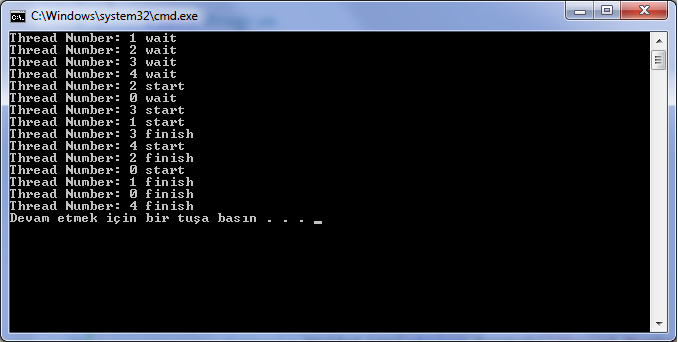

When all threads have released the semaphore, the count is at the maximum value specified when the semaphore was created. When the count is zero, subsequent requests block until other threads release the semaphore. The count on a semaphore is decremented each time a thread enters the semaphore, and incremented when a thread releases the semaphore. Threads enter the semaphore by calling the WaitOne method, which is inherited from the WaitHandle class, and release the semaphore by calling the Release method. Use the Semaphore class to control access to a pool of resources. Each worker thread begins by requesting theĬonsole::WriteLine( L"Thread ", _ allows the waiting threads to enter the semaphore,Ĭonsole::WriteLine( L"Main thread calls Release(3)." ) Ĭonsole::WriteLine( L"Main thread exits." ) semaphore count back to its maximum value, and The main thread starts out holding the entire threads to start and to block on the semaphore. Wait for half a second, to allow all the Create and start five numbered threads. so that the entire semaphore count is initially Create a semaphore that can satisfy up to three A padding interval to make the output more orderly. A semaphore that simulates a limited resource pool. The simulated work interval is increased slightly for each thread, to make the output easier to read. Each time the semaphore is released, the previous semaphore count is displayed. Each thread uses the Thread.Sleep method to wait for one second, to simulate work, and then calls the Release() method overload to release the semaphore. The main thread uses the Release(Int32) method overload to increase the semaphore count to its maximum, allowing three threads to enter the semaphore. The example starts five threads, which block waiting for the semaphore.
#SEMAPHOR IN C CODE#
The following code example creates a semaphore with a maximum count of three and an initial count of zero.


 0 kommentar(er)
0 kommentar(er)
